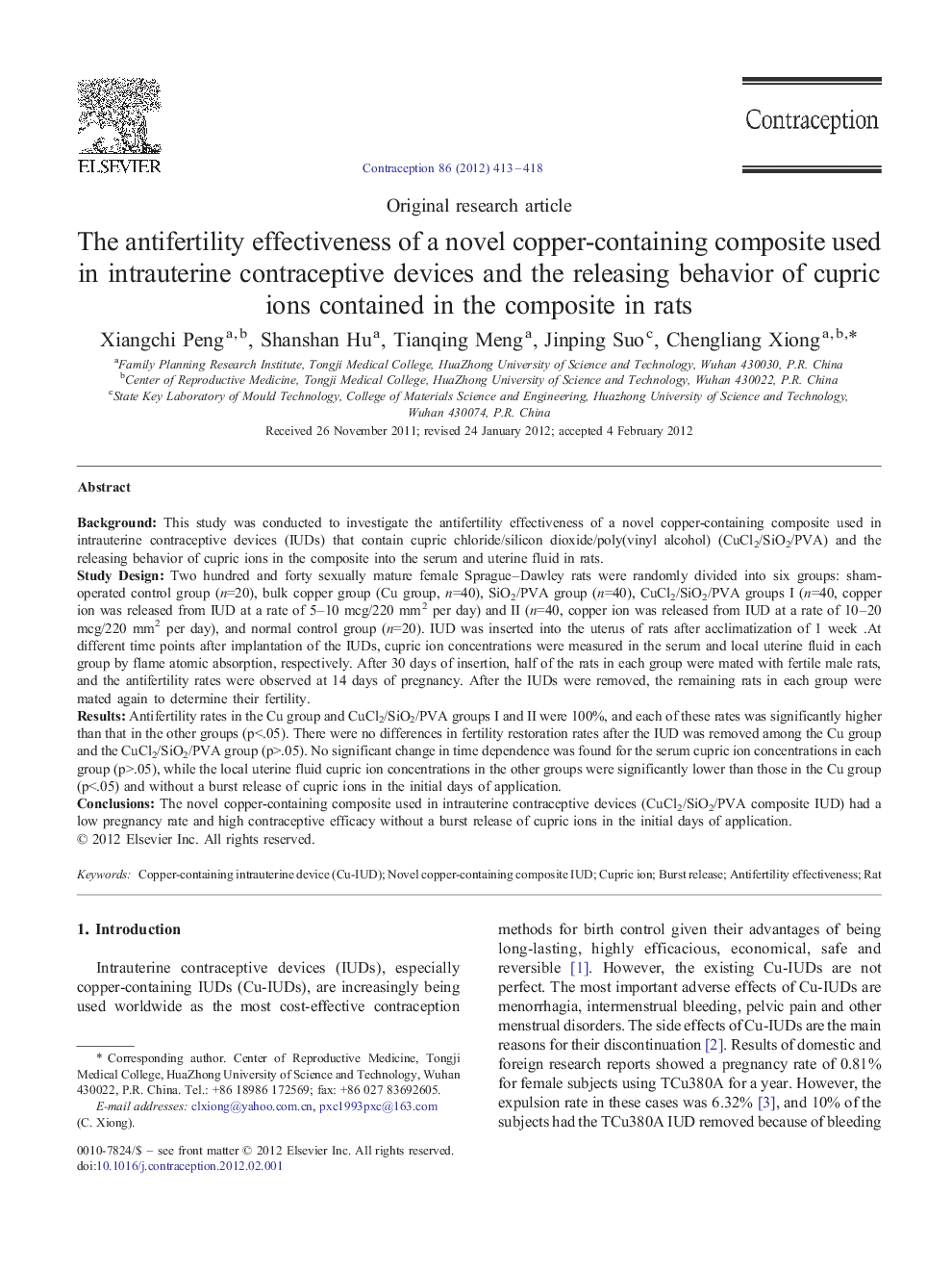| Article ID | Journal | Published Year | Pages | File Type |
|---|---|---|---|---|
| 3914155 | Contraception | 2012 | 6 Pages |
BackgroundThis study was conducted to investigate the antifertility effectiveness of a novel copper-containing composite used in intrauterine contraceptive devices (IUDs) that contain cupric chloride/silicon dioxide/poly(vinyl alcohol) (CuCl2/SiO2/PVA) and the releasing behavior of cupric ions in the composite into the serum and uterine fluid in rats.Study DesignTwo hundred and forty sexually mature female Sprague–Dawley rats were randomly divided into six groups: sham-operated control group (n=20), bulk copper group (Cu group, n=40), SiO2/PVA group (n=40), CuCl2/SiO2/PVA groups I (n=40, copper ion was released from IUD at a rate of 5–10 mcg/220 mm2 per day) and II (n=40, copper ion was released from IUD at a rate of 10–20 mcg/220 mm2 per day), and normal control group (n=20). IUD was inserted into the uterus of rats after acclimatization of 1 week .At different time points after implantation of the IUDs, cupric ion concentrations were measured in the serum and local uterine fluid in each group by flame atomic absorption, respectively. After 30 days of insertion, half of the rats in each group were mated with fertile male rats, and the antifertility rates were observed at 14 days of pregnancy. After the IUDs were removed, the remaining rats in each group were mated again to determine their fertility.ResultsAntifertility rates in the Cu group and CuCl2/SiO2/PVA groups I and II were 100%, and each of these rates was significantly higher than that in the other groups (p<.05). There were no differences in fertility restoration rates after the IUD was removed among the Cu group and the CuCl2/SiO2/PVA group (p>.05). No significant change in time dependence was found for the serum cupric ion concentrations in each group (p>.05), while the local uterine fluid cupric ion concentrations in the other groups were significantly lower than those in the Cu group (p<.05) and without a burst release of cupric ions in the initial days of application.ConclusionsThe novel copper-containing composite used in intrauterine contraceptive devices (CuCl2/SiO2/PVA composite IUD) had a low pregnancy rate and high contraceptive efficacy without a burst release of cupric ions in the initial days of application.
